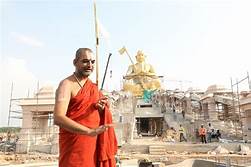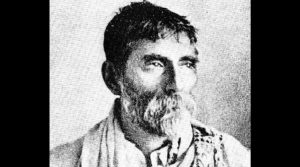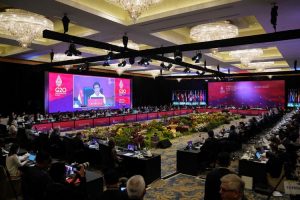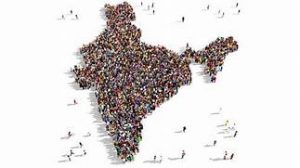Today Current Affairs: 13th July 2022 for UPSC IAS exams, State PSC exams, SSC CGL, State SSC, RRB, Railways, Banking Exam & IBPS, etc
Table of Contents
Statue Of Peace Of Swami Ramanujacharya:

In Srinagar, Union Home Minister Shri Amit Shah unveiled Swami Ramanujacharya’s Statue of Peace.
- Ramanujacharya was Born in 1017 in Sriperumbudur in Tamil Nadu.
- Ramanujacharya is revered as a Vedic philosopher and social reformer.
- He travelled across India, advocating equality and social justice.
- He Brought the treasure of Vedic literature to the doorsteps of the common man.
- Advocated the philosophy of Visistadvaitha, qualified monism.
- Dispelled the Mayavada concept, the world is illusionary.
- Became the preceptor of the Bhakti movement and the source for all other Bhakti Schools of thought.
- He was an inspiration for mystic poets like Kabir, Meerabai, Annamacharya, Bhakta Ramdas, Thyagaraja, and many others.
- Initiated the concept that Nature and her resources like Water, Air, Soil, Trees, etc., are sacred and should be protected from pollution.
- The installation of this peace statue will bring the blessings and message of Ramanujacharya to Kashmiris of all religions and will take Kashmir further on the path of peace and progress.
- It would further enhance the development of the people of Kashmir without any discrimination.
Azores High:

A study revealed that an extremely large ‘Azores High’ (a subtropical weather phenomenon) has resulted in abnormally dry conditions across the western Mediterranean, including the Iberian Peninsula, primarily occupied by Spain and Portugal.
- Azores High is a subtropical high pressure system that extends over the eastern subtropical North Atlantic and western Europe during winter.
- It is associated with anticyclonic winds in the subtropical North Atlantic.
- It is formed by dry air aloft descending the subtropics and coincides with the downward branch of the Hadley Circulation.
- Hadley Cells are the low-latitude overturning circulations that have air rising at the equator and air sinking at roughly 30° latitude.
- They are responsible for the trade winds in the Tropics and control low-latitude weather patterns.
- Hadley cells could extend all the way to the poles.
Effects of Azores High:
- An annual drying of 5-10 millimetres per year per decade has been recorded in the Iberian Peninsula throughout the second half of the 20th century.
- A further 10-20% drop in winter precipitation is expected by the end of the 21st century.
- These projected changes make agriculture of the Iberian region some of the most vulnerable in Europe.
- The study projected:
- Olive-growing regions in southern Spain will suffer a 30% decline in production by 2100
- Cultivation area in grape-growing regions across the Iberian Peninsula will shrink 25% – 99% by 2050 due to severe water deficits that will render land unsuitable for viticulture.
- The Azores High expansion is driven by external climate forces and that the only external forcing that produces this signal in the industrial era is atmospheric greenhouse gas concentrations.
- Azores High expansion emerged after 1850 and strengthened in the twentieth century, consistent with anthropogenically driven warming.
- The researchers explored the changing atmospheric conditions since the onset of the industrial era that contributed to these regional hydroclimatic changes by assessing how the characteristics of the Azores High varied over the past 1,200 years.
Major Economies Forum On Energy And Climate (MEF):

The Union Minister for Environment, Shri Bhupender Yadav, represented India at the virtual meeting of the Major Economies Forum on Energy and Climate (MEF), hosted by U.S. President Joseph Biden.
- The Major Economies Forum on Energy and Climate (MEF) was launched on March 28, 2009.
- The MEF meeting was aimed at galvanising actions that are to strengthen energy security and tackle the climate crisis thereby building momentum for COP27.
- The meeting was attended by twenty three major economies across the world and the Secretary General of United Nations.
Initiatives by India on climate change:
- Shri Bhupender Yadav emphasised that India’s initiatives go beyond its borders, including the International Solar Alliance, and the Coalition for Disaster Resilience Infrastructure.
- He mentioned that India has already installed 159 GW of non-fossil fuel based electricity generation capacity.
- And during the last 7.5 years, India’s installed solar energy capacity has increased over 18 times.
- Shri Yadav highlighted that India’s annual per capita emissions are only a third of the global average and its cumulative GHG emissions are less than 4 percent.
- He called upon the members of MEF to launch a global movement on LIFE i.e. Lifestyle for Environment as espoused by the Prime Minister Shri Narendra Modi at the COP26 in Glasgow.
PM Modi Unveils National Emblem On New Parliament Building:

Prime Minister Narendra Modi unveiled the National Emblem cast on the roof of the new Parliament building.
- The concept sketch and process of casting the National Emblem on the roof of the building went through eight different stages of preparation from clay modelling/ computer graphics to bronze casting and polishing.
About National Emblem:
- On 26 January 1950, a representation of the Lion Capital of Ashoka placed above the motto, Satyameva Jayate, was adopted as the State Emblem of India.
- It was chosen as a symbol of contemporary India’s reaffirmation of its ancient commitment to world peace and goodwill.
- The state emblem is an adaptation from the Sarnath Lion Capital of Ashoka.
- In the original, there are four lions, standing back to back, mounted on an abacus with a frieze carrying sculptures in high relief of an elephant, a galloping horse, a bull and a lion separated by intervening wheels over a bell-shaped lotus
- Carved out of a single block of polished sandstone, the Capital is crowned by the Wheel of the Law (Dharma Chakra).
Dark Matter:

One of the most sensitive dark matter detector experiments named LUX-ZEPLIN (LZ) in the U.S.A, has been used for finding evidence of dark matter in the universe.
- All interactions in the universe are a result of four fundamental forces acting on particles — strong nuclear force, weak nuclear force, electromagnetic force and gravitation.
- Dark matter is particles that do not have a charge — which means they do not interact through electromagnetic interactions.
- “dark”: because they do not emit light.
- “matter”: because they possess mass like normal matter and hence interact through gravity.
- Dark matter is elusive because: Gravitational force is extremely weak.
- A particle that interacts so weakly becomes rather elusive to detect.
Acharya Prafulla Chandra Ray:

Ministry of Culture along with the Department of Chemistry, University of Delhi, and Vijnana Bharti (VIBHA) organized a curtain-raiser for two days International Conference on the “Contributions of Acharya Prafulla Chandra Ray as a Chemist and Freedom Fighter”.
- PC Ray’s contribution to the field of Science was a step toward nation-building. He was also a scholar who championed educational reforms, promoted employment through industry, and rallied for political advancement.
- Discovered several ground-breaking chemical compounds (eg: mercurous nitrite), published more than a hundred and fifty research papers in famous science journals (eg: Journal of the Chemical Society of London); authored many books on chemical sciences (eg: Life and Experience of a Bengali Chemist).
ISRO Launches The World’s First Facility To Track Space Debris, And Safeguard Assets:

ISRO launches the world’s first facility to track space debris, and safeguard assets.
- IS4OM is ISRO’s holistic approach to ensure the safety of space assets and sustaining the utilization of outer space for national development.
- In response to the ever-growing space object population and the risk of collisions in space, it undertakes observation and monitoring of space objects and space environment, processing the observations for orbit determination, object characterization and cataloguing, analysis of space environment evolution, risk assessment, and mitigation, and data exchange and collaboration.
- Prevent a rising concern about Kessler Syndrome, which states that a collision in space due to pollution could increase the number of space debris, increasing the number of potential collisions due to the multiplying space debris.
G-20 Foreign Ministers Meeting:

The External Affairs Minister of India met with the US Secretary of State and Russian Foreign Minister and other counter parts in Bali (Indonesia) on the sidelines of the G20 Foreign Ministers Meeting.
- The meeting was held under the theme of “Building a more peaceful, stable, and prosperous world together.”
G20 Meeting:
India & China:
- The External Affairs Minister of India met the State Councilor and Foreign Minister of China.
- India called for an early resolution of all the outstanding issues along the LAC in Eastern Ladakh.
- Recalling the disengagement achieved in some friction areas, India reiterated the need to sustain the momentum to complete disengagement from all the remaining areas to restore peace and tranquility in the border areas.
- Both sides affirmed that the military and diplomatic officials of the two sides should continue maintaining regular contact and looked forward to the next round of Senior Commanders’ meeting at an early date.
- China appreciated India’s support during its BRICS Chairmanship this year and assured China’s support for India’s upcoming G20 and SCO Presidency.
World Population Prospects 2022:

According to the 2022 edition of the United Nations’ World Population Prospects (WPP), India is projected to surpass China as the world’s most populous country in 2023.
- The Population Division of the UN has been publishing the WPP in a biennial cycle since 1951.
- Each revision of the WPP provides a historical time series of population indicators starting in 1950.
- It does so by taking into account newly released national data to revise estimates of past trends in fertility, mortality or international migration.
Findings of the Report:
- The global population is expected to grow to around 8.5 billion in 2030, 9.7 billion in 2050 and 10.4 billion in 2100.
- In 2020, the global growth rate fell under 1% per year for the first time since 1950.
- More than half of the projected increase in global population up to 2050 will be concentrated in just eight countries:
- The Democratic Republic of the Congo, Egypt, Ethiopia, India, Nigeria, Pakistan, the Philippines and the United Republic of Tanzania.
- The 46 Least Developed Countries (LDCs) are among the world’s fastest-growing.
- Many are projected to double in population between 2022 and 2050, putting additional pressure on resources and posing challenges to the achievement of the UN’s Sustainable Development Goals (SDGs).
- The share of the global population aged 65 years or above is projected to rise from 10% in 2022 to 16% in 2050.
- A sustained drop in fertility has led to an increased concentration of the population at working ages (between 25 and 64 years), creating an opportunity for accelerated economic growth per capita.
- This shift in the age distribution provides a time-bound opportunity for accelerated economic growth.
- International migration is having an important impact on population trends for some countries.
- For high-income countries between 2000 and 2020, the contribution of international migration to population growth exceeded the balance of births over deaths.
- Over the next few decades, migration will be the sole driver of population growth in high-income countries.
- India’s growth rate stood at 2.3 % in 1972, which has dropped down to less than 1% now.
- In this period, the number of children each Indian woman has during her lifetime has come down from about 5.4 to less than 2.1 now.
- This means that Indian has attained the Replacement Fertility Rate, at which a population exactly replaces itself from one generation to the next.
- Fertility rates have been declining, so have mortality rates with increased access to healthcare and advances in medicine.
- Population of 0-14 years and 15-24 years will continue to decline while those of 25-64 and 65+ will continue to rise for the coming decades.
- This reduction of premature mortality for successive generations, reflected in increased levels of life expectancy at birth, has been a driver of population growth in India.
Amrit Sarovar Mission:

In a move that could expedite the implementation of railway and highway projects across the country, the Centre has asked the Ministry of Railways and the National Highways Authority of India (NHAI) to use the soil or silt excavated from ponds and tanks in all districts under the Amrit Sarovar mission for their infrastructure projects.
- The water conservation mission launched by Prime Minister Narendra Modi on April 24 aims at developing and rejuvenating 75 waterbodies in each district in all States as part of the celebrations of Azadi ka Amrit Mahotsav.
- At least 50,000 waterbodies are expected to be rejuvenated during the nationwide programme that would culminate on August 15, 2023.
- Since the project would involve excavation of several thousands of tonnes of earth in the form of soil or silt, the Ministry of Rural Development has told the Ministry of Railways and the NHAI to map its infrastructure projects with the Amrit Sarovar sites in all States and UTs.
Anti-Defection Law:

In light of the events in Maharashtra, with the Uddhav Thackeray government facing internal dissent from a block of 22 MLAs led by Eknath Shinde, the anti-defection law has again come into the spotlight.
- The anti-defection law was included in the Constitution as the Tenth Schedule in 1985 to combat the “evil of political defections”.
- The main purpose was to preserve the stability of governments and insulate them from defections of legislators from the treasury benches.
- The law stated that any Member of Parliament (MP) or that of a State legislature (MLA) would be disqualified from their office if they voted on any motion contrary to the directions issued by their party.
- The provision was not limited to confidence motions or money bills (which are quasi-confidence motions).
- It applies to all votes in the House, on every Bill and every other issue.
- It even applies to the Rajya Sabha and Legislative Councils, which have no say in the stability of the government.
- Therefore, an MP (or MLA) has absolutely no freedom to vote their judgement on any issue.
- They have to blindly follow the direction of the party.
- This provision goes against the concept of representative democracy.
Azooxanthellate Corals:

Scientists have recorded four species of corals for the first time from Indian waters. These new species of azooxanthellate corals were found from the waters off the Andaman and Nicobar Islands.
- All the four groups of corals are from the same family, Flabellidae.
- Truncatoflabellum crassum (Milne Edwards and Haime, 1848), T. incrustatum (Cairns, 1989), T. aculeatum (Milne Edwards and Haime, 1848), and T. irregulare (Semper, 1872) under the family Flabellidae were previously found in Japan, the Philippines and Australian waters, while only T. crassum was reported with the range of Indo-West Pacific distribution.
Azooxanthellate Corals:
- The azooxanthellate corals are a group of corals that do not contain zooxanthellae and derive nourishment not from the sun but from capturing different forms of planktons.
- They are deep-sea representatives with the majority of species being reported from depths between 200 metres and 1,000 metres.
- They are also reported from shallow waters unlike zooxanthellate corals that are restricted to shallow waters.
- Azooxanthellate corals are a group of hard corals. Hard corals are the prime and intrinsic part of the coral reef ecosystem.




